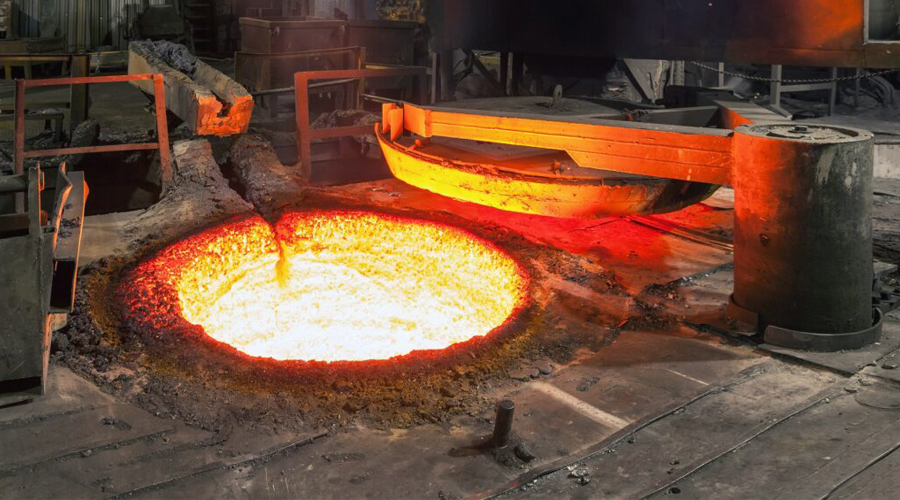Induction furnace steel revolutionized the steel industry by providing an efficient and cost-effective method of melting and refining metals. These furnaces use the principle of electromagnetic induction to generate heat, which is then transferred to the metal being melted. This technology is becoming increasingly popular due to its numerous advantages over traditional furnaces.
Induction Furnace Steel Principles & Advantages
The working principle of IF furnaces the use of alternating current (AC) passed through a copper coil.
When current flows, this coil creates a strong magnetic field around it. When a metallic object, such as scrap steel, is placed in this magnetic field, eddy currents are induced within the metal. These eddy currents in turn generate heat due to the resistance of the metal. As a result, the metal is heated rapidly, reaching the melting point in a short time.
One of the main advantages of induction furnaces for steelmaking is their high energy efficiency. Unlike traditional furnaces that require heating of the entire furnace chamber, induction furnaces heat the metal directly, minimizing heat loss. This efficiency translates into reduced energy consumption, making induction furnace more environmentally friendly and cost-effective.
Another significant advantage of induction furnace is the ability to precisely control the melting process.
By adjusting the power to the copper coil, the operator can adjust the temperature very precisely. This level of control results in steel produced with consistent quality and performance that meets the stringent requirements of various industries.
Induction furnace steel is also known for its versatility and flexibility. They can melt a variety of metals, including steel, iron, copper and aluminum. Additionally, these furnaces can handle different batch sizes, making them suitable for both small-scale and large-scale steel production. The ability to quickly switch between different metal alloys also makes induction melting furnace ideal for foundries and metal recycling facilities.
The compact size and design of IF further contributes to their popularity. Unlike traditional furnaces, which often require large installations and extensive infrastructure, induction furnaces can be easily installed in existing facilities. This compactness allows for more efficient use of space and provides greater flexibility in setting up steelmaking operations.
In conclusion, induction furnace steel has further enhanced and transformed the steelmaking industry by providing an efficient and flexible method of melting and refining metals. Their ability to precisely control the melting process, high energy efficiency and versatility make them indispensable in modern steel production.
As the demand for high-quality steel continues to grow, induction furnaces will play a vital role in meeting these requirements while reducing energy consumption and environmental impact.

